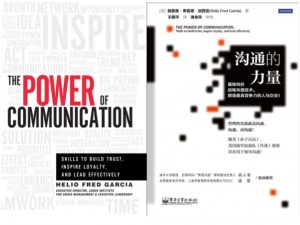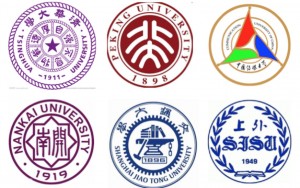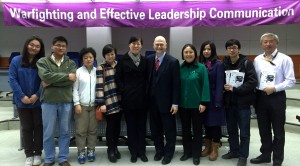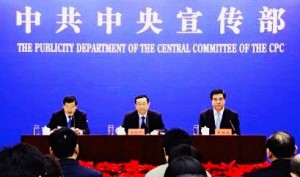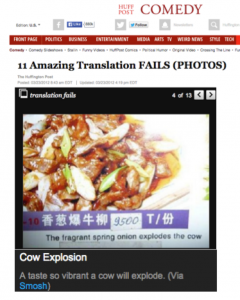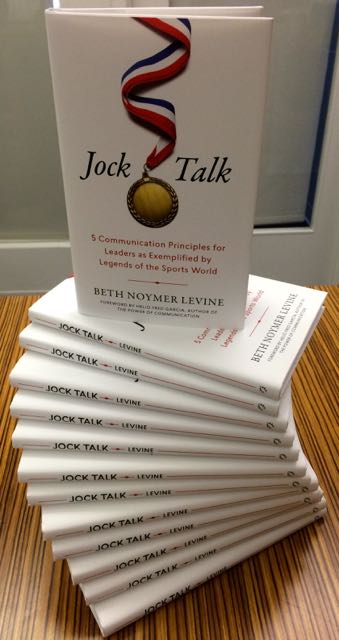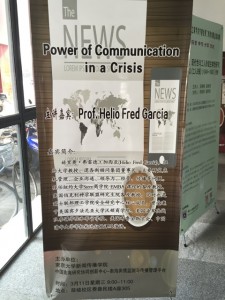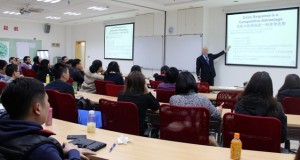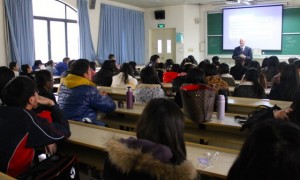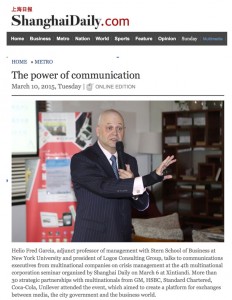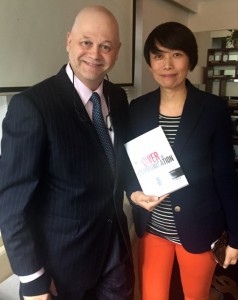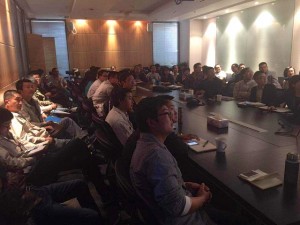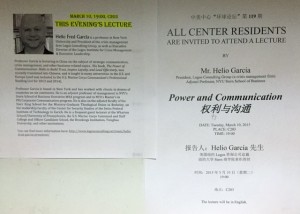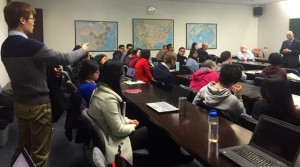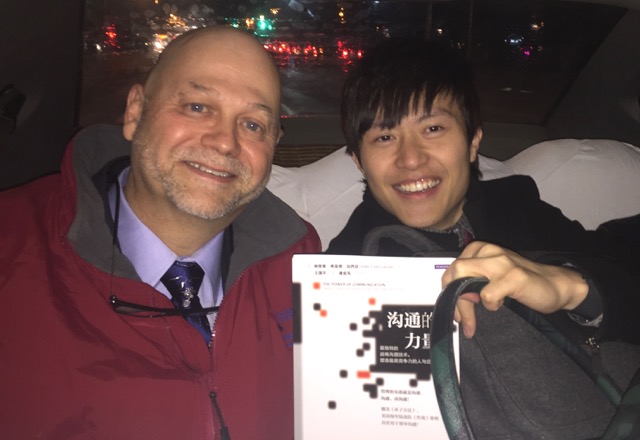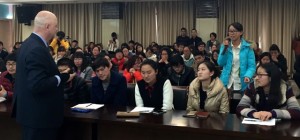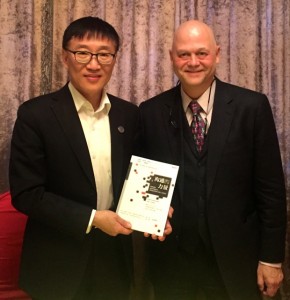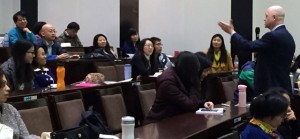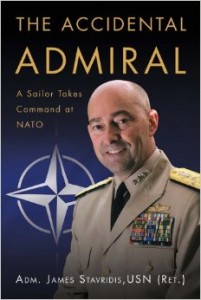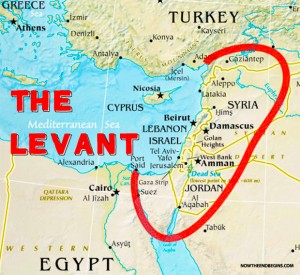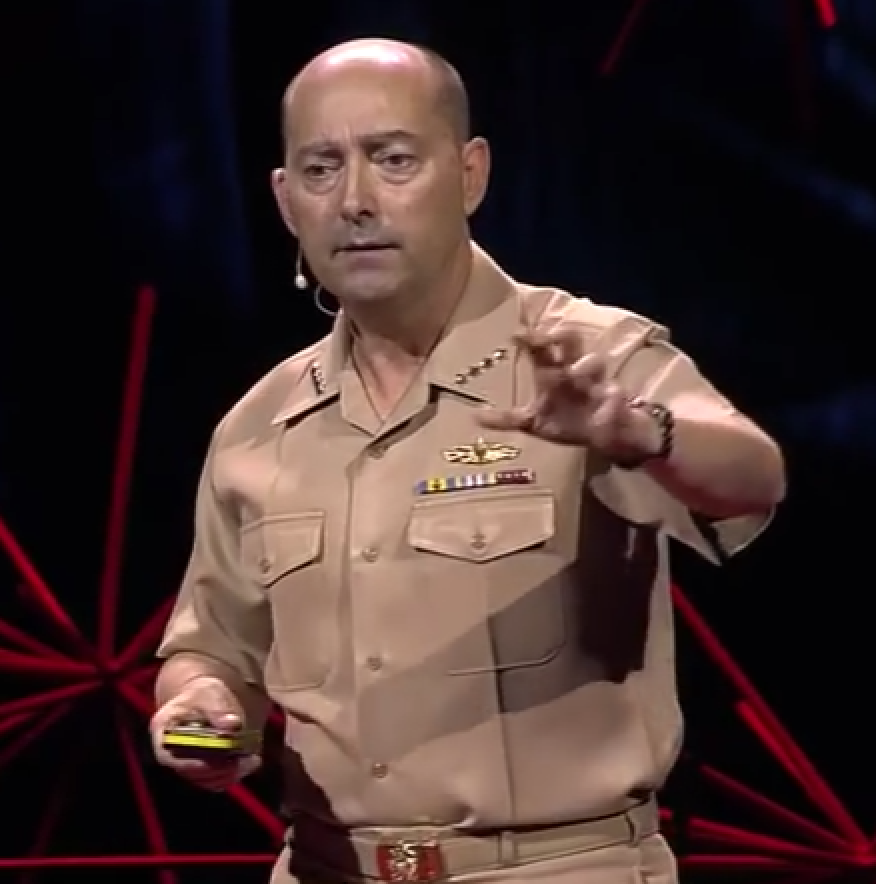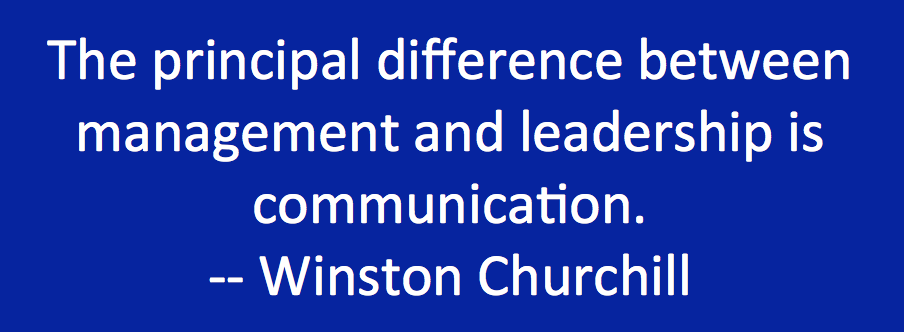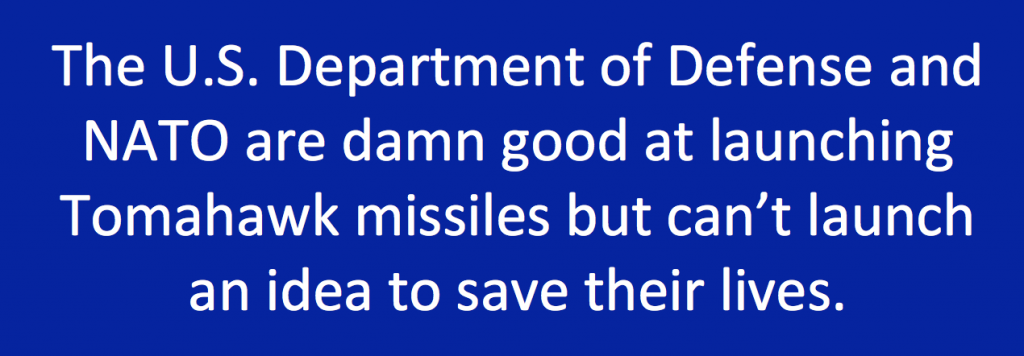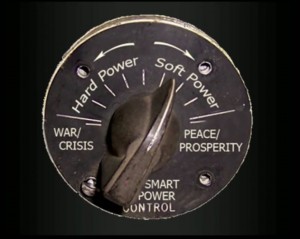One key rule in crisis communication is: Make promises and then deliver them.
In my last blog, I applied my 10C Model of Apologies to Volkswagen Then-CEO Martin Winterkorn’s Apology towards the Volkswagen Emission Scandal. And I promised to do the same with current U.S. CEO Michael Horn’s equivalent apology for VW’s emission scandal, that he delivered during the launch of the 2016 VW Passat.
So, here I am to deliver my promise.
Check here to review the model and the first analysis.
I here focus on Horn’s speech at the launch of the new 2016 Volkswagen Passat on Sept. 21, 2015, instead of his testimony at the congressional hearing on Oct. 8, 2015, because first time almost always sets the tone.

1. CONTENT: Five languages
As I said in the last blog post, CONTENT has to do with the language used in the apology:
- Expressing regret— “I am sorry.”
- Accepting responsibility— “I was wrong.”
- Making restitution— “What can I do to make it right?”
- Genuinely repenting— “I’ll try not to do that again.”
- Requesting forgiveness— “Will you please forgive me?”
The Five Languages of Apology (Gary Chapman and Jennifer Thomas, 2007)
Let’s see whether Horn covered all 5 languages (transcript source: Autoweek):
1) An expression of regret —
“As I see it, stated that he (Winterkorn) was personally and deeply sorry for this; that Volkswagen has broken the trust of our customers and the public here in America.
I can tell you of my heart, this is completely inconsistent with our core values.”
2) An acceptance of responsibility for the mistake —
“So let’s be clear about this: Our company was dishonest with the EPA and the California Air Resources Board, and with all of you. And in my German words, we have totally screwed up.”
3) A form of restitution or compensation —
This part is missing in his apology.
4) A credible commitment to change and a promise that the act won’t occur again —
“We must fix those cars, the cars, to prevent this from ever happening again. And we have to make things right with the government, the public, our customers, our employees and also very important, our dealers.
My commitment, first and foremost, is to make sure that our entire company has what it takes to resolve this big challenge.”
5) A request for forgiveness —
He repeated the phrase “restore your trust” several times, but he never asked for forgiveness.
Horn did a good job in responsibility and repenting. He stood out and acknowledged what happened, and his words of taking the accountability became frequently used quote and title after his apology. Either “dishonest” or “we screwed up” are not positive words, but his frankness won applause from stakeholders.
Horn seemed to cover four key languages out of five and only missed restitution, which Winterkorn also missed. Let’s guess what happened: 1) Volkswagen did not disclose or even have any plans of compensation, so both Winterkorn and Horn did not know anything about that. 2) VW has a plan, Winterkorn is informed but did not say anything so Horn was not able to say anything since he did not receive any instructions about compensation from the headquarter. 3) Both Winterkorn and Horn were informed, but Horn followed Winterkorn’s approach of ignoring the restitution part.
Horn might have excuses for not providing any clues about restitution, but he should change his expression of regret and request forgiveness. He related Winterkorn’s sorrow, but he never apologized on behalf of himself, which will deduct points of his performance. He repeated the phrase “restore your trust” several times, but he never asked for forgiveness.
He did a better job than Winterkorn, but still failed to perform well in CONTENT. (Grade: B)
2. CHANNEL: Where does the leader express the contrition?
There is no unified platform for apologies, but the leader should pick up the most suitable channel. As a general principle, it should be in the channel or channels that reasonable stakeholders would appropriately expect to find the apology.
Three days after the VW emission scandal and one day after Winterhorn’s apology, Horn unexpectedly delivered his statement at the launch of the new Volkswagen Passat at an event in Brooklyn, New York. Choosing this venue triggered controversy. Opponents accused him for downplaying the magnitude of the crisis, and for apologizing in an entertaining way.
As a crisis communication practitioner, I would like to offer my insights to evaluate the effect of his choice of CHANNEL. Notice that trade shows and other Investor Relations events are usually scheduled long in advance. It is very possible that the event was planned weeks ago, the emission scandal broke out suddenly, just three days before the trade show. What’s more, VW CEO, Horn’s boss in Germany, issued a public statement one day before the trade show.
Now Horn has three choices: 1. Do nothing. Horn could cancel or postpone the event, or even send someone else to speak at the event. 2. Do something. Horn could facilitate the trade show as a normal trade show, and hold a press conference another time in another venue. 3. Do something more. Horn could attend the event as scheduled, but be fully prepared for what his stakeholders could ask about the emission scandal and speak first to control the media agenda.
What did he do eventually? He accepted the third option, to show his care and readiness, to answer before people asked, to use the First Mover Advantage and to behave proactively towards his stakeholders.
If he had taken one of the first two options — to remain silent on the issue or to wait for a better chance — he would have been “surprised” by the quantity of inquiries, doubts and criticism on the emission scandal rather than the curiosity of the new Passat. If he did not show up, the headlines would have read “VW U.S. CEO disappears out of shame.” If he facilitated the event as usual, the headlines would have read “VW U.S. CEO only cares about new products, not customers.” These headlines are much worse than “Why VW’s American Dealers Saved U.S. Chief Michael Horn’s Job.”
He chose a smart CHANNEL to meet his audience. (Grade: A)
3. CONTROL: When does the leader express the contrition?
The Golden Hour of crisis response refers the observation that incremental delays in responding effectively to the crisis lead to greater-than-incremental harm to trust and confidence. The longer it takes to show that the leader or company cares, the harder it becomes, the more harm it causes, and the harder it is to eventually restore trust.
The VW emission scandal broke out on Sept. 18, 2015, Winterkorn issued the video apology three days later, and Horn addressed his statement one day after his boss’s apology. Horn made the right decision to apologize fast, but not too hastily. Horn waited until Winterkorn did his statement, which showed the consistency and alignment of the company.
Horn smartly used CONTROL in his apology. (Grade: A)
4. CHANGE: Are there any promises or following actions?
In the first 10C, CONTENT, we noted that a credible commitment to change is one of the five languages of apology, but the meaning of CHANGE here is different. That first change is what leaders say, whereas this second CHANGE is what leaders actually do. In other words, leaders should promise that first change, in the content of the apology, and then deliver the second CHANGE in their subsequent actions, to their stakeholders. Trust is built through the delivery of the promise.
Horn said in the trade show that VW will do what needs to be done to make things right to win back trust, but he was not able to articulate the change at that time. He lost some points for not elaborating changes at this first public appearance, but he won some points back when he listed the changes in his testimony before the House Committee on Energy and Commerce Subcommittee on Oversight and Investigations. Let’s see when and how he and VW would deliver these promises.
Horn performed fair in terms of CHANGE. (Grade: B)
5. CUSTOMIZATION: Is it a general or a customized apology?
Apologies are directed towards human beings, not inanimate objects. Different stakeholders have different needs and expectations. Leaders should understand each group of the target audience — employees, customers, investors, community, government, media and interest groups — and speak in words that have particular meaning to each of them.
Horn performed better than Winterkorn in terms of showing care to specific stakeholders. First, what Winterkorn did was a general video statement towards everyone who can connect to the Internet and access Volkswagen’s website, whereas what Horn did was a live speech towards a specific audience at the trade show. Admittedly, the number of people of such kind of events are much smaller compared with the number of an online video audience, however, almost all of these limited participants come from the auto industry, which means 1) they were waiting to see Horn’s response to the scandal; 2) they had the strongest motivation to share voluntarily. Second, Winterkorn only mentioned employees and customers in his statement, whereas Horn talked about his personal story, his emotional connection with Volkswagen and how he wished his dealers, customers and employees could share in continued success.
Horn did a good job on CUSTOMIZATION. (Grade: A)
6. CHARACTERISTIC: Acute or chronic?
Crises could be differentiated as acute crises or chronic crises: Acute crises happen unexpectedly, and need quick and proactive engagement. Chronic crises happen with notice, involve a series of ongoing issues, and need careful monitoring, consideration, and investigation.
As I said in the last blog post, the VW emission scandal did not happen overnight. Evidence shows that five scientists from West Virginia University detected additional emissions during road tests on two diesel cars. And European Commission’s Joint Research Centre warned the possible use of defeat devices as early as 2013. Therefore, this is a long-term issue and warranted a thorough investigation.
Horn did a better job than Winterkorn in understanding the characteristic of the crisis. Winterkorn said that he was unaware of the problem until very recently, which sounds like buck-passing. In contrast, at the Passat trade show Horn acknowledged VW’s dishonesty and the fact that they screwed up. However, Horn did not do a perfect job of informing the company as soon as he knew about a potential emissions problem with the company’s vehicles in spring 2014. His concealing behavior looks suspicious – at very least not responsible.
Horn did not fully understand the CHARACTERISTIC of the issue. (Grade: C)
7. CONSEQUENCE: How severe is the issue?
What harm does the crisis cause? Economic loss? Reputational damage? Product recall? Casualties? Different consequences require different levels of treatment.
Unlike the BP Deepwater Horizon crisis, which caused severe bodily and environmental harm, no one died because of the VW emission scandal. However, it led to a product recall, resulted in environmental degradation, and caused a huge economic loss and reputational damage to VW.

This is one of the few Cs that Winterkorn accomplished better than Horn. No one died because of defeated device, but it is not the excuse for understating the significance of the issue. Environmentalist will protest and argue that VW caused irremediable environmental damage.
He underestimated the CONSEQUENCE. (Grade: B)
8. CULTURE: What’s the cultural background of the crisis and the apology?
Where does the issue happen? Where do leaders, followers and stakeholders come from? The perception of apology varies widely across different cultures. Leaders who are eager to sell their products worldwide and see the growth of sales volume rarely understand their global stakeholders.
Horn did an excellent job in expressing his contrition and sorrow in the language of his American audience at the Passat trade show. Notice that like Winterkorn, Horn is also from Germany as you can tell that from his accent, but that did not undermine the sincerity of his apology. Apart from that, he also incorporated American style in his gestures and tones to look authentic but local.
He fully understood the CULTURE behind the crisis. (Grade: A)
9. CAUSE: What’s the psychological incentive of the leader?
What’s the motivation behind the expression of sorrow? Is it a sincere apology or a non-apology apology? An honest or touching apology could be very strategic. If leaders say anything unwillingly or even worse, refuse to apologize at first and then relent under pressure, no matter how perfect the statement looks, the apology is seen to be just useless words.
Horn looked sincere and convincing in the launch of the trade show, but was accused of being hypocritical since because he had been informed one year ago of “possible emissions noncompliance.” According to New York Times, He testified 3 weeks ago in a congressional hearing that he had been told that the company’s engineers would work with the Environmental Protection Agency to resolve the issue and also that Volkswagen’s technical teams had a specific plan for bringing the vehicles into compliance. We don’t know what has happened exactly, since the investigation is still ongoing, but his acknowledgment of not revealing the issue works better than having someone else disclosing that.
This is a typical learning point: We make mistakes. If you made a mistake at the beginning, the right thing to do next is just to acknowledge it next time you are asked about that. If you hide and hedge, then you are making a second mistake and the snowball of mistakes will become larger and it will be harder to correct.
Horn failed to show a 100 percent sincere CAUSE, but he made a timely remedy. (Grade: B)
10. CHARISMA: Does the leader enjoy a good reputation?
Apologies from trustworthy leaders are more likely to be accepted because of the leaders’ positive personal image, whereas statements from disreputable leaders are not trusted and can be counterproductive. In addition, if the leader apologized for other problems in the past but failed to keep his or her word and deliver on the promise of the apology, stakeholders and the public will not trust that leader in the future.
Unlike Winterkorn who was featured on some brilliant CEO lists and worked as CEO of VW AG for seven years, Horn became CEO and President of Volkswagen Group of America only in 2014. His resume is not as brilliant as Winterkorn’s, but this does not undermine his charisma. He spent 23 years in VW before he became CEO and his experience in sales makes him humble.
His CHARISMA helps build the credibility of his apology. (Grade: A)
Summary

(A=4.0; B=3.0; C=2.0; D=1.0; F=0)
If we grade Horn’s performance using the same grade calculator as we did with Winterkorn, we see that Horn’s GPA is slightly higher than B+ but lower than A-. Among the 10Cs, he did a good job in choosing the channel, controlling the timing, customizing his words and understanding stakeholders’ culture, but he failed to include all five languages of an apology and did not act as soon as he was informed about the emission issue.
As a result, Horn’s apology, along with his calm performance in the congressional hearing helped him keep his job as the head of VW U.S.
(In contrast, Winterkorn’s GPA was C+ and he lost his job even after he did a decent apology.)
Bonus
I would like to thank my readers for the feedback on my last blog post, and answer some of the most frequently raised questions:
1. Regard to the 8th C – Culture, you mentioned that leaders should pay attention to the cultural background of stakeholders. Do you think this strategy will make leaders seem like a fake?
Showing your care in a crisis does not require you to behave like someone else. Instead, it encourages you to listen to your stakeholders even if they did not grow up in the same way you did, even if they were not educated in the same way you were. You should understand the perception of apology in different continents, especially if you deal with global stakeholders.
2. Are grades subjective?
It is very hard to evaluate cases in the communication field with a rigid formula and an impartial attitude, but I am following an objective model and check criteria step by step. We all remember old school days when our final projects were independent essays: If there is no right or wrong in expressing thoughts on a specific topic, why did she get an A but he did not pass? This is also the reason why I studied the hidden 10Cs in apologies – To break down as much as I can, and be as objective as I can.
3. How could a deliberate scandal (Volkswagen’s emission scandal) not be worse than a natural disaster (BP’s Deepwater Horizon Oil Spill)?
I analyzed the motivation behind the apologies, not the motivation behind crises. To avoid a crisis and to issue a credible apology are two different questions. What happened to VW seems to be deliberate even though we don’t know exactly who are informed before Sep. 18; What happened to BP seems to be unexpected, but check what Logos found 5 years ago: BP’s 2009 Gulf of Mexico spill response plan lists professor Peter Lutz as its national wildlife expert, saying he’s a professor at the University of Miami. But professor Lutz left Miami 20 years ago for Florida Atlantic University in Boca Raton. And he died in 2005.
I appreciate all kinds of comments and welcome any criticism to polish this 10C Model for Apologies, and to make more contribution to understand and evaluate apologies in the past, as well as help shape effective apologies in the future.









 (Titles of reports. Source: Süddeutsche Zeitung Fortune)
(Titles of reports. Source: Süddeutsche Zeitung Fortune)
